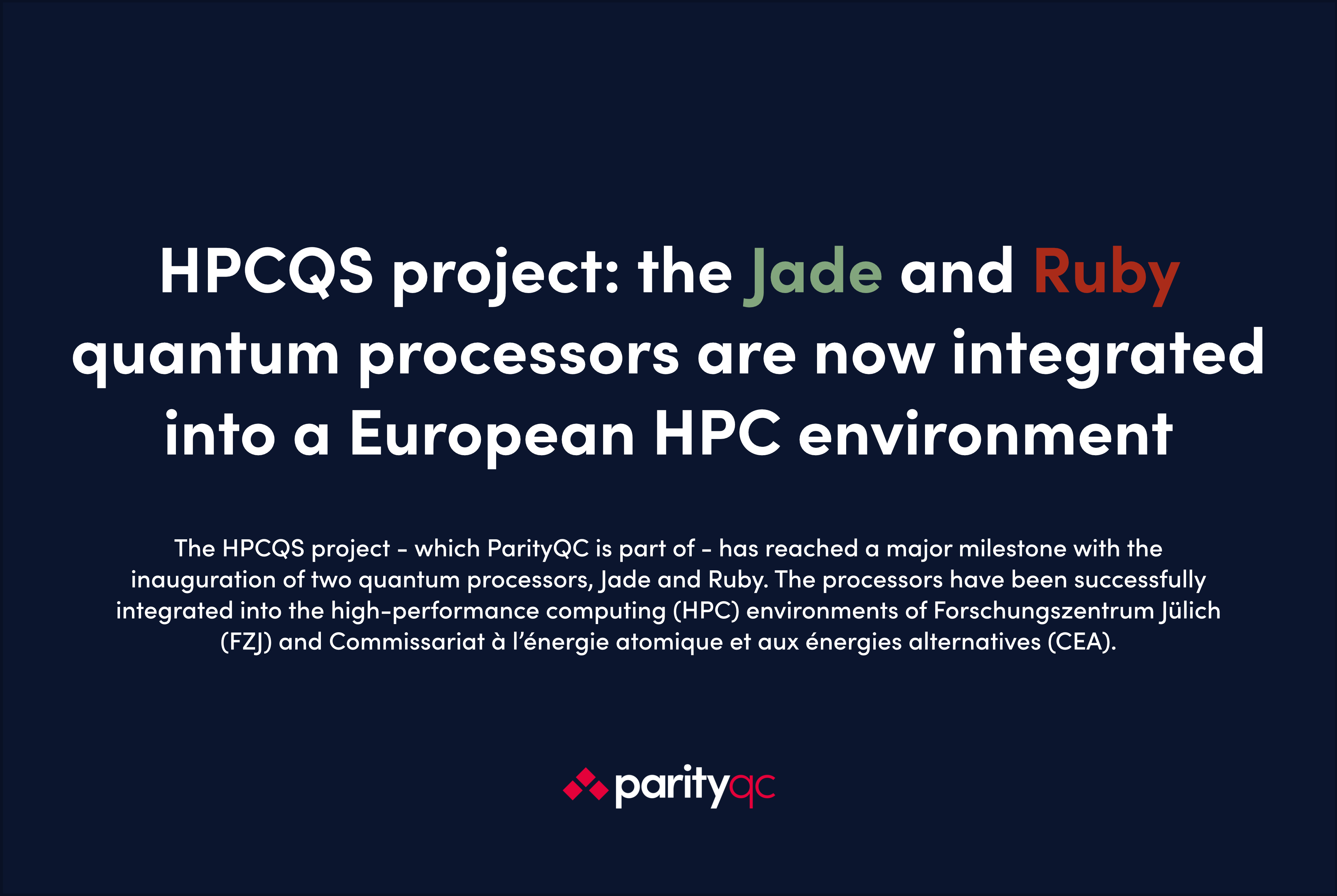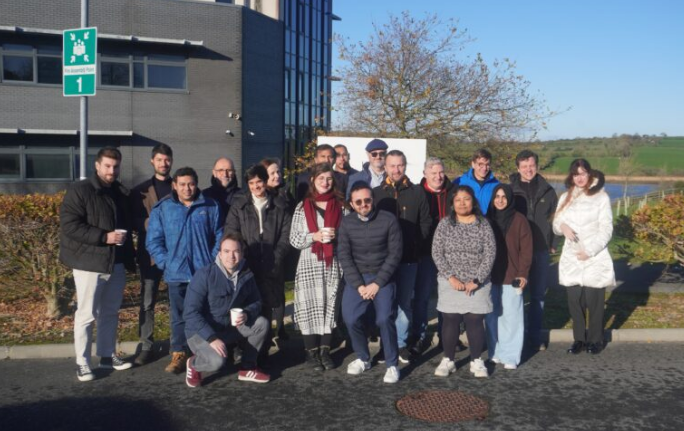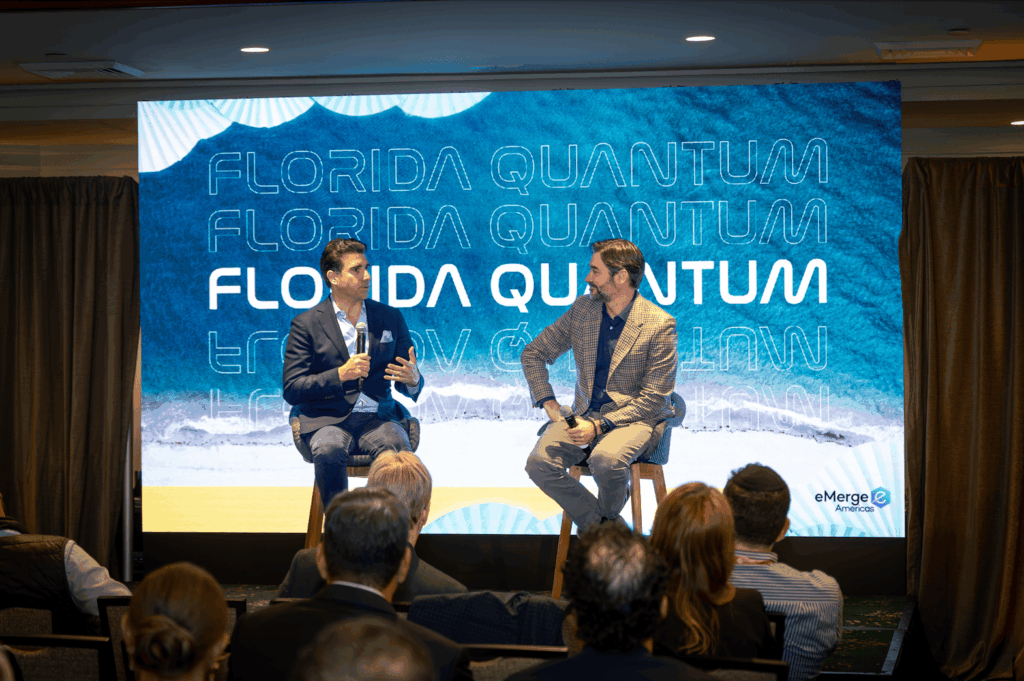Insider Brief
- Europe’s HPCQS project has initiated two Pasqal quantum processors, Jade and Ruby, integrated into high-performance computing environments to advance hybrid quantum-classical computing.
- The processors, based on neutral-atom technology, are linked with HPC infrastructure via advanced software, enabling researchers and industry to run hybrid quantum-classical algorithms for applications like drug discovery, optimization, and industrial design.
- The milestone demonstrates European leadership in quantum computing, supporting the Quantum Flagship initiative and enabling scientific and industrial workflows to leverage quantum acceleration at scale.
The High-Performance Computing and Quantum Simulator hybrid (HPCQS) project has reached a major milestone with the inauguration of two Pasqal quantum processors – Jade and Ruby – respectively situated at Forschungszentrum Jülich (FZJ) and Commissariat à l’énergie atomies et aux energies alternatives (CEA).
The successful integration of the two next-generation quantum processors into high-performance computing (HPC) environments, an achievement made possible by Europe Joint Undertaking, marks a decisive step toward making quantum computing a practical component of Europe’s scientific and industrial computational landscape. Moreover, it delivers on the ambition set out by the European Commission in the 2030 Digital Compass: the European way for the Digital Decade, proposing that, by 2025, Europe will have its first computer with quantum acceleration paving the way for Europe to be at the cutting edge of quantum capabilities by 2030.
On November 13th, the quantum processors Jade and Ruby are being jointly inaugurated in a triplex event at FZJ, CEA and the European Commission’s premises, reflecting the collaborative nature of the project. In the course of the event, the two processors, situated respectively at Jülich Supercomputing Centre (JSC) in Germany and Très Grand Centre de Calcul (TGCC) will be presented.

Hardware Integration: Quantum Computing capabilities for HPC Infrastructure
The integration of the two quantum processors represents a decent progress in transforming quantum technology from laboratory experiments into reliable computing infrastructure. This integration will provide a key step towards a federated EuroHPC quantum-HPC infrastructure, enabling users from both industry and research to develop hybrid quantum-classical algorithms and tackle complex problems such as industrial battery design, drug discovery, and optimization challenges in finance and traffic management.
The quantum processing units (QPUs) were prefabricated by the company Pasqal before being shipped to the data centres of CEA and FZJ. Pasqal’s technology is based on arrays of neutral atoms that are trapped and manipulated by lasers in programmable geometries for quantum operations. These systems operate at room temperature and with low power consumption, making them particularly robust and scalable.
The combination of optical precision and naturally identical atoms creates a unique platform designed for quantum computing on an industrial scale.
Software and Connectivity: Seamless Quantum-Classical Integration
Beyond the hardware assembly, the integration also focuses on achieving a seamless quantum-classical workflow through advanced software solutions.
The quantum processors are integrated into the HPC environment through standard workload management systems such as SLURM, enabling hybrid quantum-classical computations to run using familiar commands. This ensures that researchers and HPC operators can leverage quantum computing power with minimal adaptation, turning quantum into a natural extension of classical infrastructure.
A specific HPC-Quantum Computing software stack was developed by the consortium, relying on industrial and open-source software components, including Eviden Qaptiva, ParTec’s ParaStation Modulo, Slurm, and the Pasqal SDK. ParityQC contributed to this effort by providing software solutions for quantum optimization and lattice models based on the ParityQC Architecture, as well as developing related benchmarking tools and integrating ParityOS within the HPCQS software stack. This software stack is interoperable with Eviden’s Qaptiva and myQLM platforms, supporting applications in optimization, simulation, and machine learning. By bridging the gap between quantum physics and real-world computation, the HPCQS infrastructure will enable quantum resources to be directly embedded in industrial workflows.
European leadership in quantum computing
As part of the inauguration, two use cases are being demonstrated to showcase the integration of the two quantum processors, each capable of controlling more than 100 qubits, with Europe’s Tier-0 supercomputers. These demonstrations, led by research teams from across the consortium, will show how quantum-HPC integration can accelerate scientific discovery and industrial innovation.
This milestone represents a cornerstone of Europe’s Quantum Flagship initiative, reinforcing European leadership and technological sovereignty in the field of quantum computing. By linking quantum processors directly to Europe’s supercomputers, we are turning an ambitious scientific vision into a working reality.
Quotes
FZJ — “Today marks an important milestone for European research. We are entering a new phase in which quantum and classical computing begin to evolve together. This is more than a technical achievement – it signals a new paradigm for computation, one that will shape the future of scientific discovery.”
Kristel Michielsen, Director of the Jülich Supercomputing Centre and HPCQS Project Coordinator
CEA — “The CEA is very proud to host one of the first two Pasqal computers delivered and operated in an HPC computing centre. With this milestone, TGCC users and European scientific communities will be able, after three years of experiments with emulators, to use real quantum computers for their use cases. This is a first step on the road to large scale hybrid computing, which we will achieve with quantum processors integrated with the Alice Recoque exascale supercomputer.”
Bruno Lebret, Director of CEA DAM Ile de France Centre
GENCI — “In a context of international competition for critical/major technologies, the joint inauguration of Ruby in France and Jade in Germany attests to the strong position of France and Europe in this quantum race against time. The commissioning of the cold atom quantum computer produced by the French company Pasqal is a source of pride for GENCI and its Associates. This cutting-edge tool was acquired as part of the European HPCQS project thanks to the support of the French public authorities, in line with the national quantum strategy and the HQI project, which enables the hybridization of quantum technologies with those of classical computing. All this major effort should lead to new breakthroughs in French and European scientific, academic and industrial research.”
Philippe Lavocat, CEO of GENCI
Key Facts
The HPCQS project, which began on 1 December 2021 and is scheduled to run for four years, operates with a budget of €12 million, half of which is funded by the EuroHPC Joint Undertaking. The project is coordinated by Forschungszentrum Jülich under Prof. Dr. Kristel Michielsen and brings together a wide consortium of partners including FZJ, CEA, GENCI, BULL, CNR, NUIG-ICHEC, University of Innsbruck, EURICE, CNRS, Inria, CINECA, BSC, FlySight, ParityQC, and Fraunhofer IAF, with additional collaboration from linked third parties such as ParTec, Sorbonne Université, and CentraleSupélec.


















